Scribble it Down 2: Parallel Lives
Scribble it Down, founded by Einat Moglad in 2013, is an international, digital, and collaborative project. Through a sequential process artists from around the world work together to create digital works of art. Each artist contributes to a digital file, then transfers the work to the next artist, until each participant of the group has contributed to each piece. This process allows artists to bring together diverse contexts and perspectives, and the project becomes a platform for communication and dialogue. Scribble it Down aims to encourage tolerance and understanding between different cultures, traditions, and points of view, while raising questions about our place in society, our work in relation to others, and how we can give and inspire. View Scribble it Down's Homepage
About 'Scribble It Down 2: Parallel Lives
by Einat Moglad
In its second year 'Scribble it Down' presents Parallel Lives, featuring artists from Israel, USA, UK, India, Pakistan, and Serbia. The theme Parallel Lives points to the artistic process of 'Scribble it Down' by acknowledging and addressing the artists' parallel existences in different places. As the files were passed between artists, they exposed each other to their different lives and perspectives. These stories intertwine and turn the digital series into a visual journey of a collective experience. Parallel lives establishes new forms of connections between people that goes beyond the visual conversation facilitated through the project's artistic process. The artists used Facebook to establish relationships with each other and to engage in virtual group discussions about art and life. Through this process they became a community of Scribblers who took on a unique and shared identity. This year "Scribble it Down" also experienced the downfalls of a digital collaboration. One artist ceased communication, and with him disappeared the final stage of his group's piece. It is easy to shed ties when one's sole connection is virtual; this experience illuminates the difficulty of creating lasting connections and loyalty. This is "Scribble It Down"'s biggest challenge. This project is a collective creation and my role as a curator is to understand it. I encourage a certain type of work, method, and theme, but where the work goes from there is open and left to be decided only by the participating artists (Scribblers).
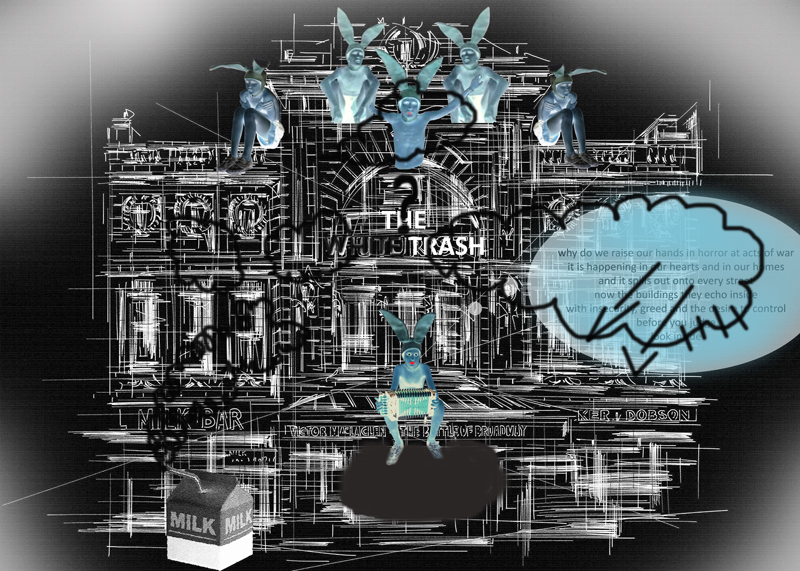
IMAGE AND TEXT
Traditionally the text that accompanies a visual work plays an important role, especially in modern and conceptual art. The same was true during this project. The artists were required to represent themselves, who they are and what interests them, a task that required communicative abilities. Adding a text became an essential part of the project, as words play a crucial role in self-representation. The strong power of words stirred a variety of reactions due to cultural differences towards certain issues.
CULTURAL DIFFERENCES
The white house - white trash discussion: when a “white house” architecture was created by one artist, the second artist, who is interested in white spaces, changed "white house” to “white trash”. As the piece continued its journey, the phrase “white trash” stirred a strong emotion in the next artist, who respectfully changed the template to black and added text that encouraged tolerance and fought racism. This interaction, which happened both in the visual work and in the discussion group, showed the importance of creating a discussion and of raising the understanding of the different ways in which images and words are perceived.
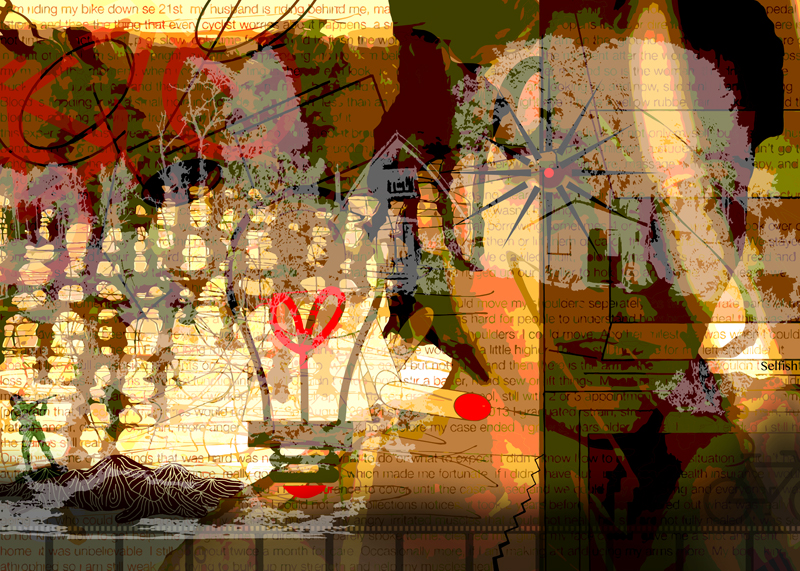
The artists have used a lot of existing images, like family portraits, pictures from travels, etc. This was due in part to comply with the requirement of representing oneself and one's life, but also to use the project to deal visually with past memories, images from local surroundings and more. Images of buildings and houses are very dominant. An artist who sees her family as her main inspiration has used images of her family as an important element.
ENTROPIC PROCESSES
In the introduction to Scribble It Down 1 I described the process that characterizes this project. I want to underline that both the process and the end pieces are here equally important. There is a need to look carefully at the type of interaction that happened inside the group. In Parallel Lives the interaction was quite unique. Although you can characterize the processes according to past models, this year a new and unique model came to life: the entropic process. The concept of entropy comes from the second law of thermodynamics, which says that as the world evolves, entropy increases. Entropy is a measure of disorder, and as it increases, order is destroyed in a process that can’t be undone or reorganized. Entropy increases as the the world moves toward chaos. We can see an analogous dynamic in the processes of Parallel Lives. The changes are vast and more and more complex at each step. We can see it in Madeeha Iqbal's process and in Roney Leigh Dobnov Raz's process. The work becomes more and more complex and disordered. In Madeeha you can see that at the end there is a wish for order that she expresses with the introduction of a frame. This only emphasizes the sometime troubling experience of complexity and chaos. View Einat Moglad's profile
VIEW PARALLEL LIVES
_________________________________________
Participating Artists
Regev Amrani (Israel) | Jayeti Bhattacharya (India) | Amy Conway (USA) | Roney Leigh Dubnov Raz (USA / Israel)
Marco Gavrilovic (Serbia) | Madeeha Iqbal (Pakistan) | Jordan Rodgers (United Kingdom)
Anne Scott (South Africa / United Kingdom) | Lars Vilhemsen (Denmark) | Jemima Williams (United Kingdom)
Jayeti Bhattacharya
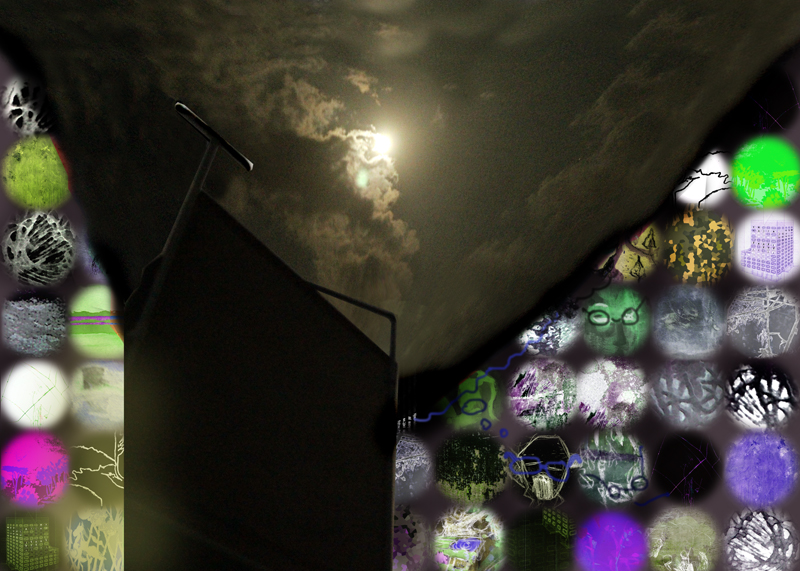
"After I submitted my first work I received an image “anne – jayeti" with many spherical forms within it, a unique gesture of the artist. I really felt uncomfortable and wondered what to do because they were holding the space tight. Then I decided to open a gap between the images and thought that the sky would be the best thing to divide it because the sky is a unifying agent of all our lives. After I added this I felt that the work started breathing." View Jayeti's profile
Marco Gavrilovic
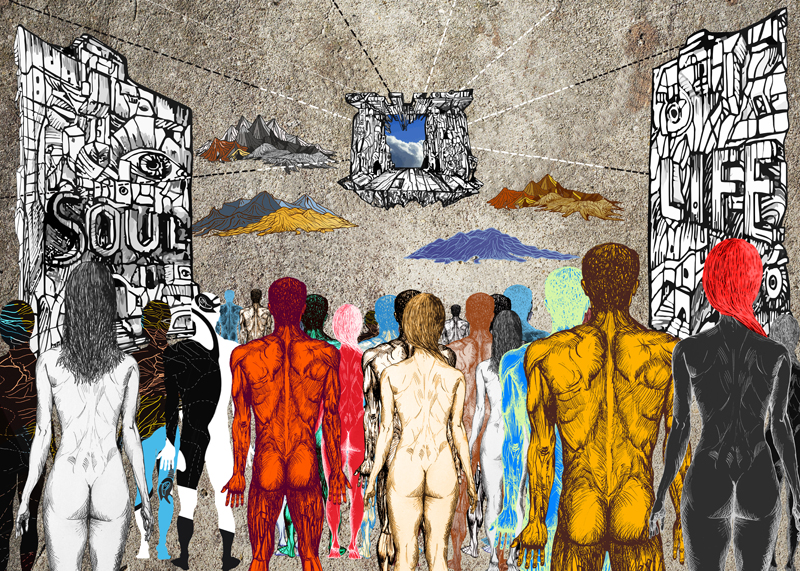
"The first artwork is the one that I called The Puzzle of the Universe. It referred to freedom of choice, to secrets of...who we are. Who convinced us, that we are alone in this Universe? Why is there this secret? For me, this was interesting, because all artists in this project come from different religious, national background and believes."
Madeeha Iqbal
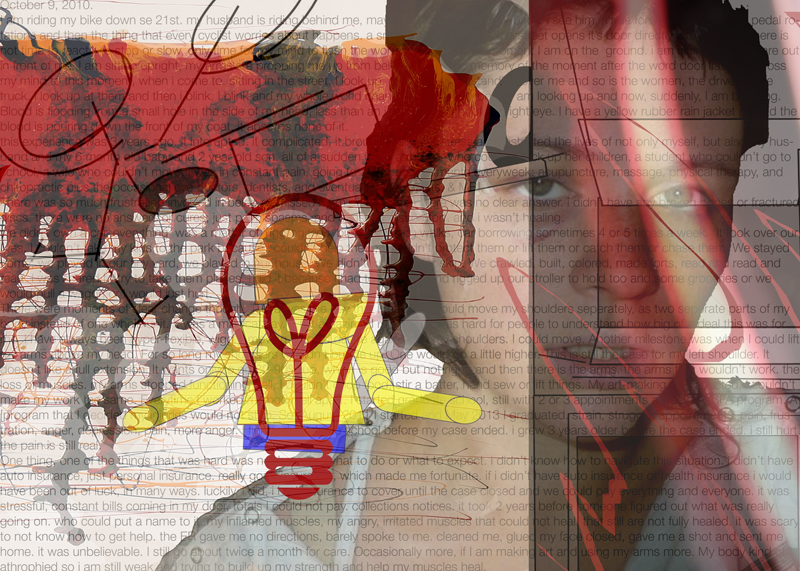
"When I come across the first work by Amy Conway I try to feel the pain she expressed in her work and then with respect I added my feelings to that. I think it’s not about the freedom of the work, but about the feelings and emotions that connect us through understanding and respect for each other." View Madeeha's Profile
Jemima Williams
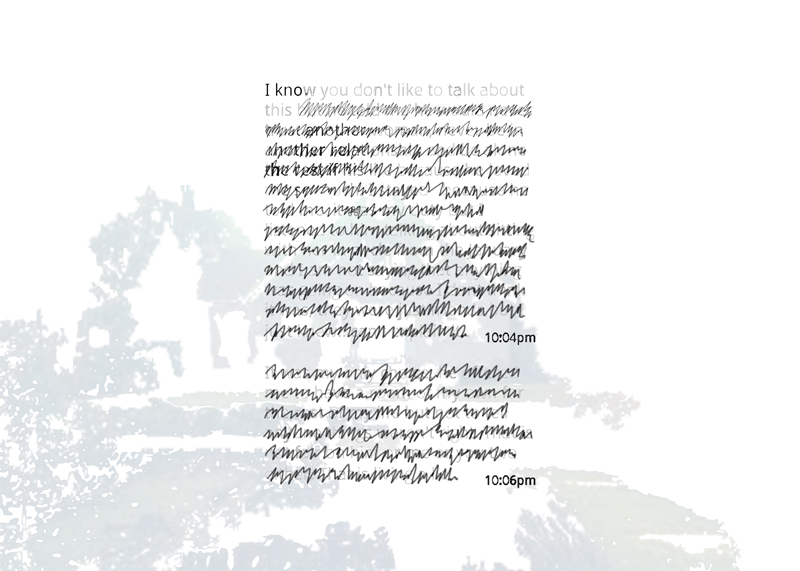
"This was my first initial work for this collaborative project, and upon receiving a blank page I struggled to decide how to start. After reading back through the emails from Einat, about how we could convey the main issues relevant in our current lives and connect ourselves to our emotional centres, I began to see how I was partitioning these issues. I used the blank page as a tool to express my current state with regards to anger and emotion, with regards to a conversation that was burdening my childhood memories and security. Within this piece I used "sous rature" (erasure) as a tool to remove the parts of the text that I feel shouldn’t have been said to me, leaving only the words ‘I know you don’t like to talk about this but…’ thus allowing the viewer to see how this other information was still relayed to me. I was really interested to see how this piece would move forward and into the collaboration.Now I feel as if I can see how the other artists involved related to my emotions and pushed the work further to create my favorite piece."
Roney Leigh Dubnov Raz

"I always received images that had text, and not fully readable. I was actually grateful for that, it helped me decide which direction to explore. For example this dark-blue-red-purple-fingerprint-wood-handicapped-textures-image, impressive and atmospheric: it says "it is possible to cross an ocean without wetting your legs, but! it is impossible to cross this life without wetting your eyes" so I went towards the crying/being torn theme - I printed the image out, cut it through the middle, laminated it, sewed it with lace and some gap in between; in the gap there is now bubble-wrap, which would suggest that it is protecting something very fragile (our heart or emotions or...) (this was the only time where my work was beyond photoshop and involved mixed media). I scanned my result and placed it over the given image, then decided how to combine the two. In the process I lost the wood (but didn't want to) so I took its "eye", flipped it upside-down, and used it as a tear. The handicapped were also gone but I placed them back, and now the work is more about "emotionally handicapped", which at that point of my life, I feared I was too!"
Amy Conway

"When I saw this I instantly knew what I needed to do, which was to overlay these vehicles over the people. A large part of why I did it was in response to the culture I live in, which is ridiculously car dependent. I saw these people moving in droves and I felt like the next layer, or step, was the vehicles. I saw it in red, it was absolutely a visceral, instant understanding for me of what I should do."
